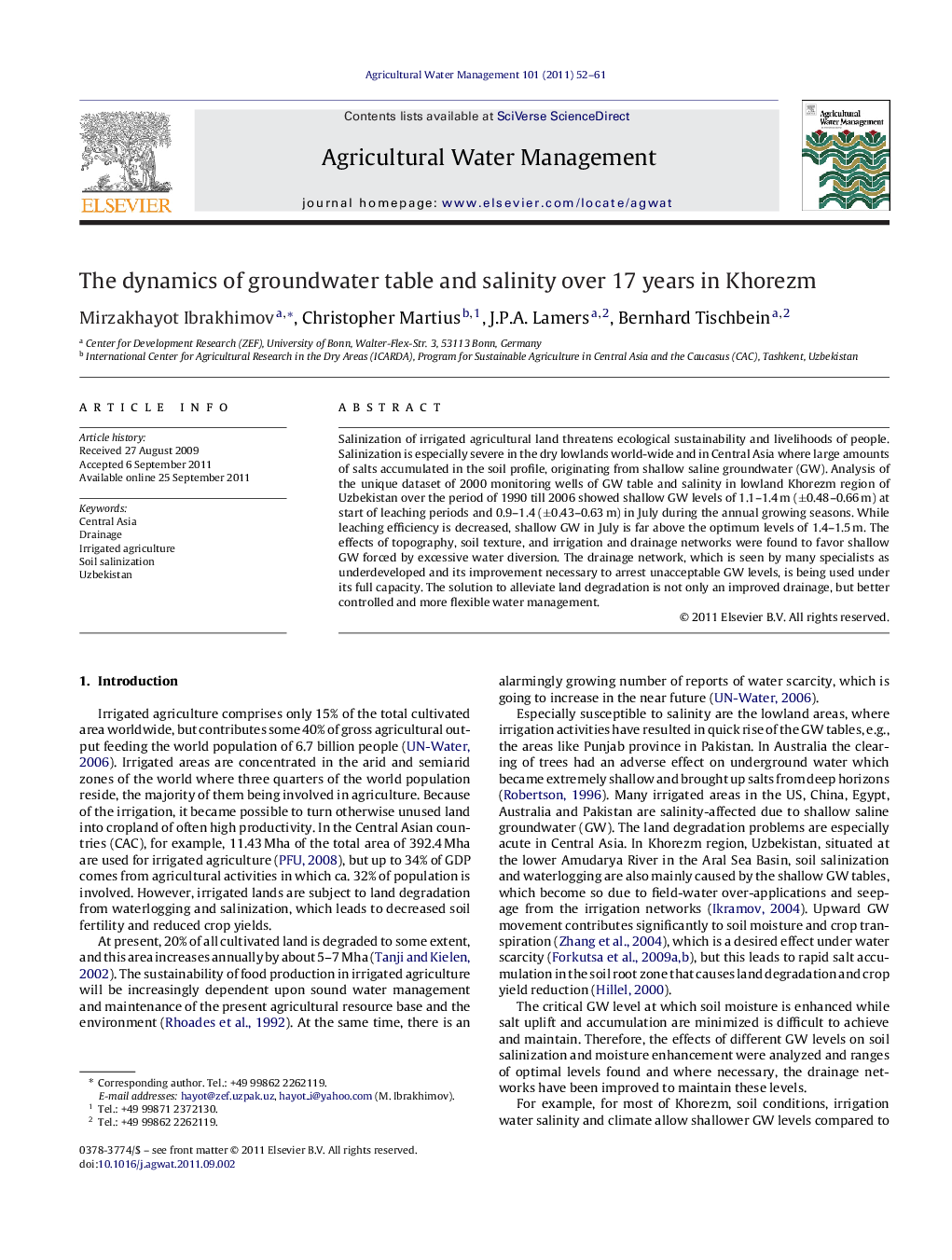| Article ID | Journal | Published Year | Pages | File Type |
|---|---|---|---|---|
| 4479255 | Agricultural Water Management | 2011 | 10 Pages |
Salinization of irrigated agricultural land threatens ecological sustainability and livelihoods of people. Salinization is especially severe in the dry lowlands world-wide and in Central Asia where large amounts of salts accumulated in the soil profile, originating from shallow saline groundwater (GW). Analysis of the unique dataset of 2000 monitoring wells of GW table and salinity in lowland Khorezm region of Uzbekistan over the period of 1990 till 2006 showed shallow GW levels of 1.1–1.4 m (±0.48–0.66 m) at start of leaching periods and 0.9–1.4 (±0.43–0.63 m) in July during the annual growing seasons. While leaching efficiency is decreased, shallow GW in July is far above the optimum levels of 1.4–1.5 m. The effects of topography, soil texture, and irrigation and drainage networks were found to favor shallow GW forced by excessive water diversion. The drainage network, which is seen by many specialists as underdeveloped and its improvement necessary to arrest unacceptable GW levels, is being used under its full capacity. The solution to alleviate land degradation is not only an improved drainage, but better controlled and more flexible water management.
► Groundwater levels in Khorezm, Uzbekistan are shallow both spatially and seasonally. ► Effects of canals, drains, soil texture and topography are not significant. ► Not drainage network, but inefficient management is a primary cause of shallow GW.
